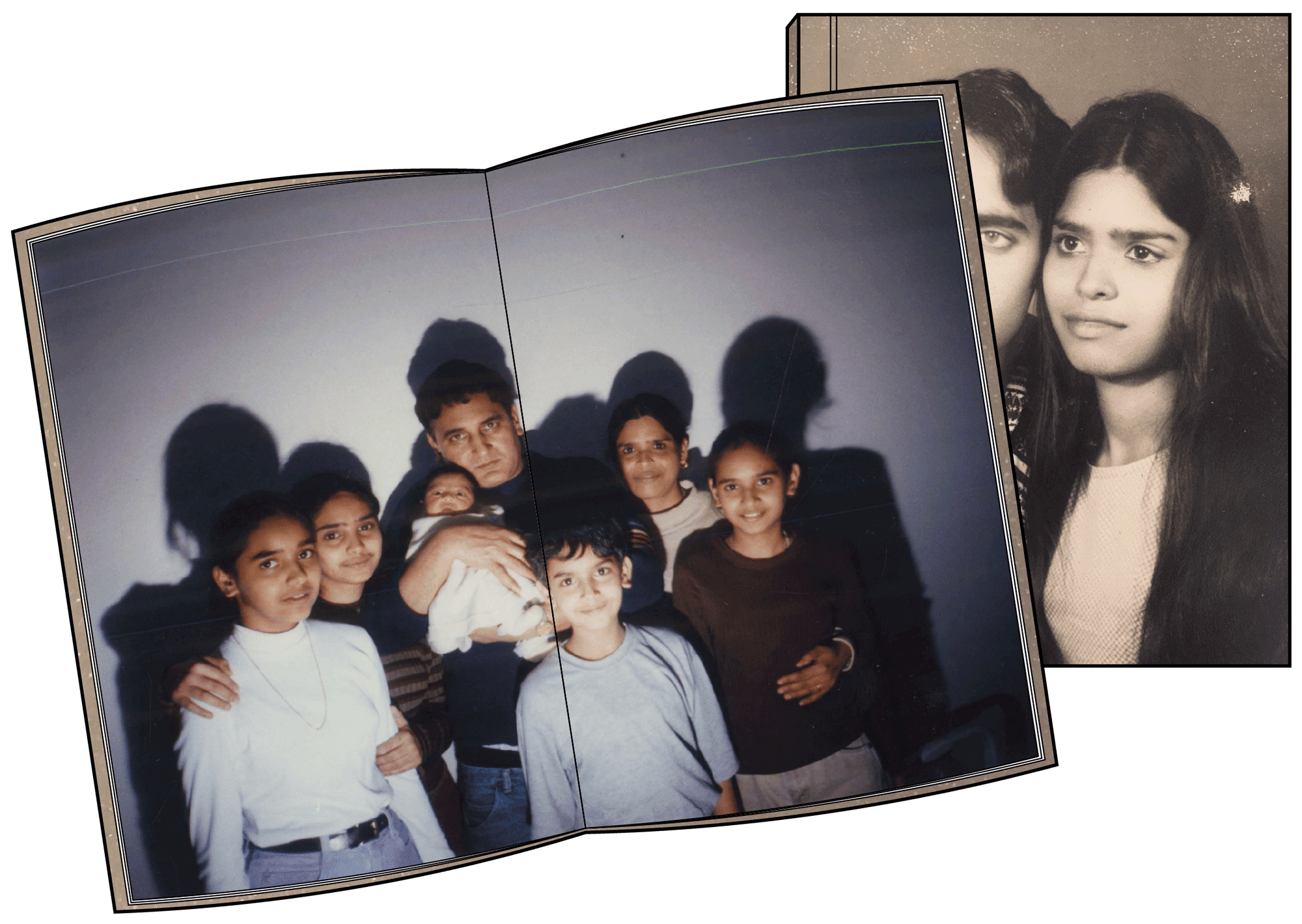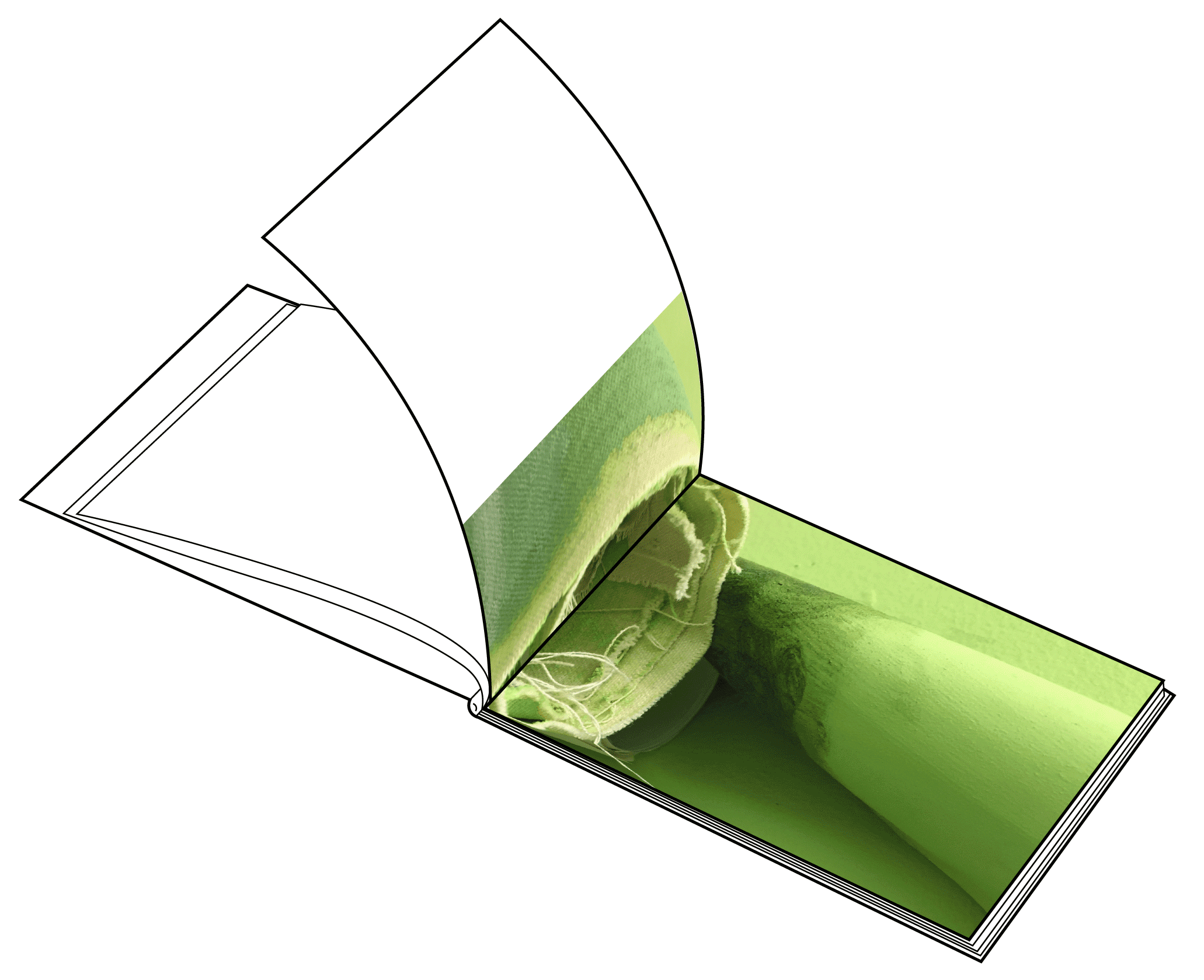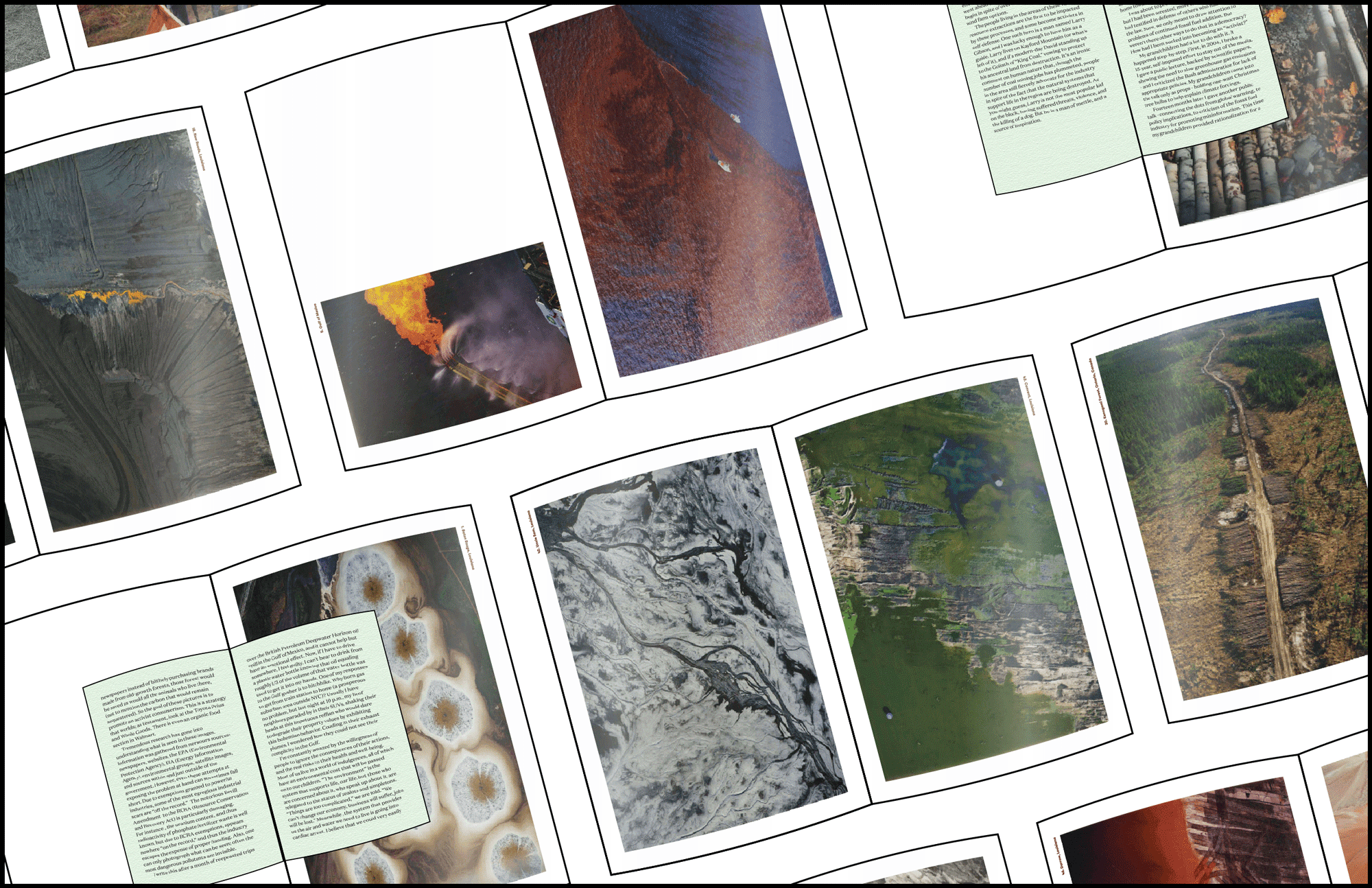Ek, Do, Teen, Chaar,
Paaanch, Chhah
(One, two, three, four, five, six)
This is a bilingual book about my family's history. It’s a look into all six siblings' lives detailing their experiences,
relationships, memories, and perspectives while growing up.
My Objective
With design I wanted to highlight the dichotomy between nostalgic and romanticized feelings that often come when looking at
old pictures with the harsh and raw words presented alongside them to express how looking through one lens can skew things.
Design Concept
One of the biggest challenges I faced was how to differentiate between the six oscillating speakers in a coherent yet interesting way
to the reader. I solved this by creating a typographic hierarchy system using indents that were determined by order of birth.
The eldest got one indent, the second got two indents, and so forth.
Another significant part of this book is language. Prior to designing, I spoke to everyone separately to gather content.
While conversing we naturally switch between languages and in an effort to keep the authenticity I decided to keep this fluctuation
in the book. However, this posed a difficult design problem which I resolved through the use of color.
The left page always had the full transcribed text with both English and Hindi, just as it was spoken. However, the Hindi
parts were all greyed out. On the right page only the translated sections could be seen in the exact same location as the untranslated
Hindi on the left page. Not only does this visually engage the reader but helps them decode the conversation intuitively.
The last component of this book was imagery. I not only used pictures within the book, I used scans of old albums.
The album had a notes section beside the image slots where my family would write captions.
I included this to showcase the personality and playfulness that was always emulated despite the reality of things —
coming full circle to my objective.


